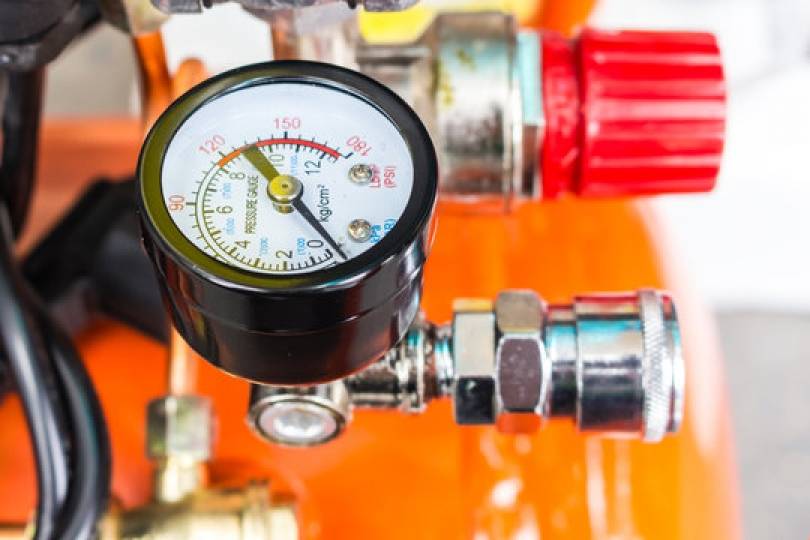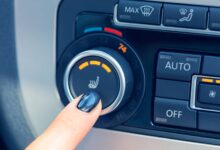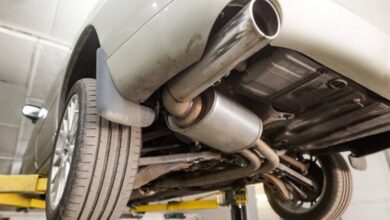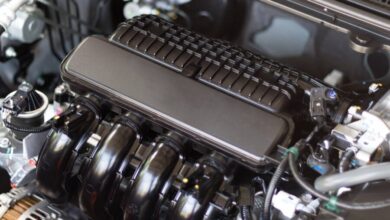Car Air Compressor Cfm Increase Ideas: How To Increase CFM On Air Compressor
Last Updated on July 25, 2022 by Thomas James
There are a lot of pieces to a car, and keeping them up to par can be difficult. One of the most important parts is the air compressor. It is where a lot of the work is done, like lubricating the wheel bearings, so it’s essential to keep that part in good working order. Unfortunately, most people don’t know how to increase the cfm on a car air compressor. There are a few things you can do to increase the cfm on your air compressor. This blog will talk about some of them.
The air compressor is arguably the most critical piece of machinery in the shop. It allows you to draw in outside air and compress it, which can then be applied to anything from welding to cutting metal. If you’ll take a moment to examine your air compressor in detail, you’ll find that there could be a few things that contribute to the high CFM it offers. More CFM means more power, and it also means that the air compressor will be able to do its job longer.

What is CFM?
CFM stands for cubic feet per minute. The volume of air is moved through the air compressor in a minute. In other words, it’s the amount of air that the air compressor can push out of the air compressor. A CFM is measured in cubic feet per minute, which is a measurement of how much air the air compressor can push out of the air compressor. It is an imperial measurement rather than a metric measurement.
You took two factors into account when calculating the CFM of a compressor. One is the size of the air holder cylinder, and the other is the pump’s speed. If your compressor has a CFM rating of 6, it means it will draw 6 cubic feet of air from the outside because CFM is related to the application of the air compressor, which rating of CFM is required depending on the task. For example, a home garage air compressor has CFM ratings ranging from 2 to 12.
You also like: How To Quiet A Noisy Car Ac Compressor?
Benefits Of Increasing CFM
There are a few benefits to increasing the CFM of a car air compressor. The first is that it will last longer. When a compressor is drawing in air from the outside, it is working. The more it works, the faster it will wear out. It’s also true that the more air that the air compressor is drawing in, the more air it will compress. It means that the air compressor will be able to do its job for longer.
Each air compressor job necessitates a specific level of CFM. The relationship between a proper CFM level and a perfectly finished job cannot be messed up.
It is dependent on your work and the compressor, as well as how much CFM you require and how it will handle it.
5 Best Ways: How To Increase Cfm On Air Compressor
There are a few things you can do to increase the cfm on your air compressor. Some of these methods will be more effective than others. You should try all of them and see which ones work best for you.
Reducing the need to increase CFM
If you are using your air compressor for a job requiring a high CFM, you should reduce the amount of time you use the air compressor. It is because you will be using the air compressor for a more extended period. The air pressure generated within the air compressor is then forced out of the outlet at a specific flow rate (CFM – volume/time). Every compressor has a power rating, which equals pressure multiplied by CFM (air flow rate). Because the compressor’s power cannot be easily increased beyond its limit, lowering the pressure in the system by dialing down a regulator causes the CFM to increase – power remains constant.
If you have a compressor rated at 4 CFM at 90 PSI, you can probably run a tool with a continuous demand of 5 or even higher if the tool’s WORKING pressure is around 40 or 50 PSI.
Considerations for Reducing Pressure to Increase CFM
- The first consideration is the air compressor’s power rating. The power rating of the air compressor should be taken into account. If you have a compressor rated at 4 CFM at 90 PSI, you should not expect to be able to run a tool with a continuous demand of 5 CFM at 40 PSI.
- Suitable for continuous air tool use (as long as compressor CFM exceeds tool CFM demand)
- Suitable for occasional use of air tools
- Simply adjusting your compressor is the most cost-effective solution.
Adding another compressor with the same CFM capacity
Another option is to add another compressor to the system. If you have two compressors with the same CFM capacity, you can run the second compressor at a lower pressure. If you have a compressor that is rated at 4 CFM at 90 PSI, you can run a second compressor at 60 PSI. This way, you can use the first compressor for the more demanding jobs and the second compressor for the less demanding jobs.
This method boosts the CFM of the air compressor pumping system while also allowing for an elevated CFM at the air compressor tank/air set pressure outlet.
You also like this: How To Fix A Stuck Manual Car Seat?
Considerations for Adding a Second Compressor with a Similar CFM
- The purchase of a second compressor is not as cost-effective.
- Pressure switches should be identical, but manufacturing variations may require adjusting to sync break and trim pressures.
- To properly size the air compressors in relation to the air tool working CFM, the DUTY CYCLE of the air compressors must still be checked.
Connecting two compressors with varying CFM
Connecting two compressors with 10 CFM and 5 CFM ratings will give you 15 CFM of continuous flow rate.
The following steps are involved in connecting the two compressors:
- Using a T-piece air fitting, connect the air receiver tanks’ outlets.
- Connect your compressed air hose to the t-outlet.
- Attach your air tool to the air hose.
Adding a second air receiver tank
Adding a second air receiver tank is a bit more complicated than connecting two compressors with the same CFM rating. Due to the more extensive reservoir of pre-compressed air waiting to be used for your high-demand air tool, the compressor pump is now filling a larger volume, resulting in a higher CFM.
Adding a second tank to an air compressor will have more cooling time (assuming you aren’t drawing more CFM from the system than the compressor pump can produce). Because there is more air stored, your air tool can run for longer before the air in the tanks falls below the air compressor pump’s cut-in pressure. So, if your air compressor has a 50% Duty Cycle and you use it for 5 minutes and then turn it off for 2 minutes, you’re too much!
It is critical to ensure that your compressor is still operating within the duty cycle limits. Adding a tank to the system can reduce the working time vs. idle time ratio, resulting in a lower duty cycle even if the pump is running for longer.
Increasing the existing compressor’s capacity
The last option is to increase the capacity of the existing compressor. Increasing the capacity of the existing compressor is the most cost-effective way to increase the air compressor’s capacity. The increased motor size will not necessarily increase CFM because the pump is typically designed to work with a specific motor size, resulting in an oversized motor on a tiny pump.
Considerations for Extending the Existing Compressor’s Size
- The air compressor pump will need to be larger to accommodate the additional airflow.
- The existing air compressor’s motor will need to be replaced with a larger motor to accommodate the additional airflow.
- Depending on the size and age of your tank, refitting a new compressor pump and motor to an existing tank may be marginally cost-effective. In many cases, purchasing a new, higher CFM compressor complete with a tank suitable for your applications may be more cost-effective.
How To Calculate CFM?
CFM (Cubic Feet Per Minute) is the most common measure of airflow. CFM is the volume of air displaced by a compressor at a given time. CFM is a function of airflow rate, in cubic feet per minute, and the displacement of the compressor, in cubic inches.
If you don’t already know the CFM level, you can calculate it using simple math. Take the total volume and divide it by the exchange rate. The answer will be your system’s CFM.
Frequently Asked Question
-How much air can I get from a compressor?
The answer to this question depends on the size of the air compressor, the air compressor’s CFM rating, the compressor’s size, and the system’s CFM. The most common rule of thumb is that the compressor’s CFM rating equals the system’s CFM. For example, if you have a 10 CFM system and a 10 CFM compressor, you should get 10 CFM of airflow.
-Is Higher CFM Better?
A compressor with a higher CFM rating will undoubtedly provide better execution. You will find it easier to work with larger applications.
Equally important is the question of how you plan to use the air. The most important factor is the amount of time your air tool will be in use. If your tool is going to be in use for only a few minutes, a lower CFM system is ideal. However, if you plan to use your air tool for a long period of time, a higher CFM system will be better.
Final Verdict
We hope you enjoyed our article on how to increase the cfm on an air compressor. We know that many people struggle with air compressors that may have bad cfms. The tips in our blog will help you increase the cfm on your air compressor, so it works more efficiently! Thank you for reading. We would love to hear from you!










